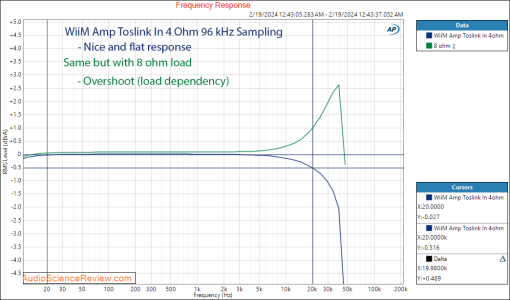Level increases with rising impedance. That's not the inverse of what I said. The exact (resistive) impedance at which the rise starts depends not just on the chip alone, but also on the output filter
That links doesn't work.
Yes, it's absolutely trivial that a real speaker presents a complex load (which has nothing to do with "complicated", it just means that the phase and magnitude are described using complex numbers, it's just mathematics). Using one or two (as Erin does). exemplary "dummy loads" doesn't provide the real picture, either. These remain special cases, just examples. There's not.muchbtypical about them.
What's really important here is that PFFB reduces all these unwanted effects! Not just the rise of the transfer function into higher resistive loads.




